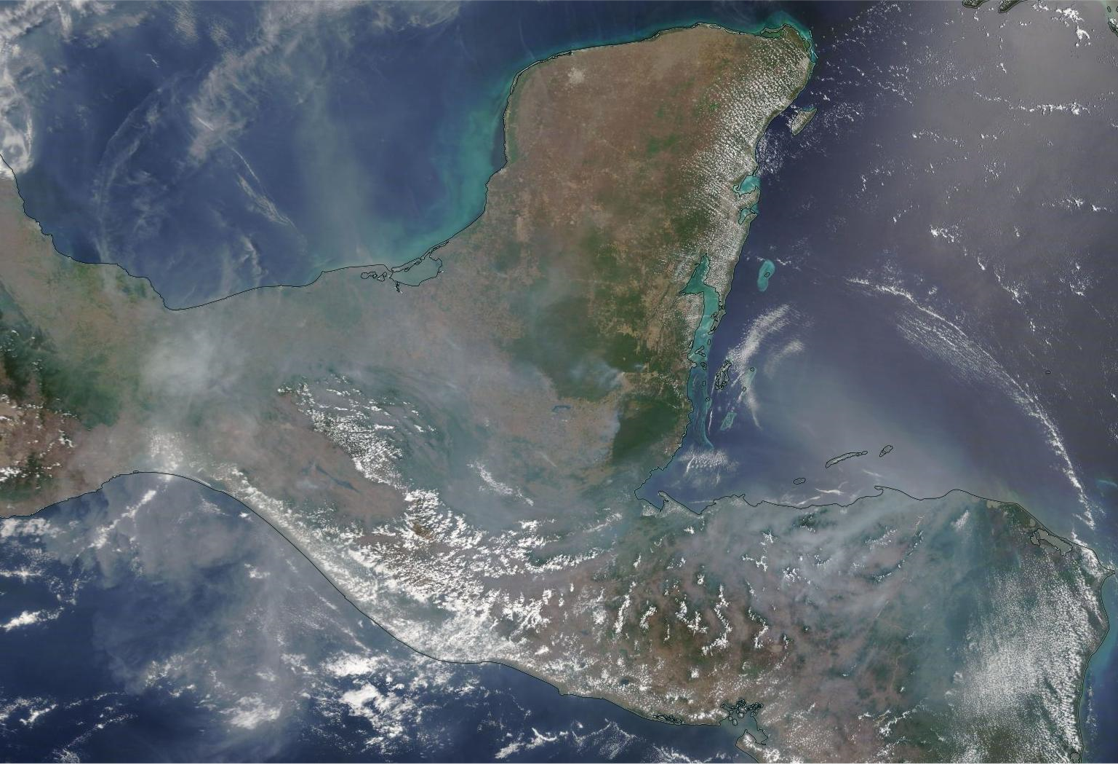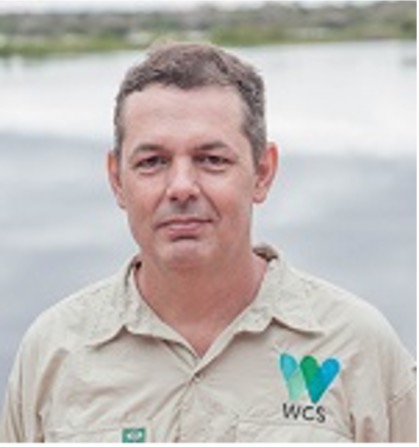Due to an unprecedented El Niño event combined with the impacts of climate change, the planet is experiencing never before seen climate anomalies, with global air and sea surface temperatures pushing far higher than ever recorded.
This global phenomenon is impacting some areas more severely than others, and Mesoamerica’s forests, wildlife and people are likely to be hit especially hard during the next 6-12 months.
CLIMATIC PHENOMENA: EL NIÑO AND LA NIÑA
Left: El Niño, September 2014 to May 2016, equatorial Pacific sea surface temperature anomaly. Right: La Niña, August 2021 to January 2023, equatorial Pacific sea surface temperature anomaly. Source: NOAA Environmental Visualization Laboratory (NNVL), NOAA Climate.gov https://www.climate.gov/data/Ocean--Monthly--Difference-from-average-Sea-Surface-Temperature--Pacific/03-broadcast/
GLOBAL SURFACE AIR TEMPERATURE ANOMALIES · SEPTEMBER

DATA: ERAS. REFERENCE PERIOD 1991-2020. CREDIT C35/ECMWF
Even before the start of the dry season, Mesoamerica is already experiencing the following signs:
- Precipation deficit: In 2023, rainfall has been far less than historical average in Mesoamerica’s 5 Great Forests, especially in the Selva Maya (-23%), Darien (-21%) and La Moskitia (-17%). The Panama Canal is already experiencing problems due to low water.
- Increased ocean temperatures: The Gulf of Mexico is at its highest temperature in recorded history, approximately 1.1° C higher than the 40-year average.
- Increased air temperatures: In the 1970s, Flores, Guatemala had an average of 4 days per year above 40° C, but during the past two decades has experienced an average of 36 days per year above 40° C.
MODIS TERRA, APRIL 21, 2020
FUENTE: NASA WORLDVIEW, MODIS TERRA
Given these factors, experts predict that 2023-2024 could have devastating effects in Mesoamerica, with the worst impacts occurring with the worst impacts occurring during the next dry season, between February and June 2024. If similar to other major El Niño events, such as those of 1998 or 2016, these could result in the following impacts:
- Widespread and rapidly intensifying forest fires
- Hazardous air pollution caused by toxic smog,
- Crop failure
- Drying of water bodies creating access to water for humans, livestock, and wildlife
 Photo: WCS Belize staff active in wildland fire management in the MFC
Photo: WCS Belize staff active in wildland fire management in the MFC

“This crisis is worsening every day. In addition to the high number of fires, we now have a situation never before experienced in recent history with a severe drought of the rivers. In my 30 years of living here, this is the most extensive and intense crisis I have witnessed. We had tense moments in 1997/98, 2005, 2010 and 2015, but what I see now is an unprecedented crisis affecting natural landscapes, biodiversity, and the majority of the population.”
-Carlos Durigan, WCS Brazil Country Director

“Due to climate change, Mesoamerica has been experiencing increasingly long and devastating dry seasons, especially during El Niño years. Widespread forest fires threaten forest habitat, wildlife, and local people. This year, some areas of Mesoamerica are already grappling with a 60% precipitation deficit even before the onset of the traditional dry season. We are extremely worried that the upcoming dry season could be devastating at a scale we’ve never seen before. We must all work together now to prepare to mitigate these impacts.”
-Gabriela Ponce, WCS Guatemala Country Director
Call to action
It is imperative that governments and actors on the ground prepare now for the potential impacts of El Niño. This involves:
1. Anticipate and Act: The first line of defense against this imminent threat is proactive anticipation. We suggest that governments establish an El Niño Response Group that coordinates and leverages expertise from various fields: meteorology, disaster management and more. This group will be the hub for strategic planning, ensuring that our countries are not only reactive but several steps ahead of potential disasters. It will be essential to establish a robust fire prevention and management system, which includes improving early detection, strengthening fire gaps and provisioning rapid response teams.
2. Allocate Budgets: Financial preparedness is as crucial as strategic preparedness. Governments must ensure that emergency response agencies are not constrained by budgetary restrictions. Adequate funding must be allocated, ensuring rapid and effective response capabilities. The cost of inaction or delayed action, both in financial terms and the invaluable loss of natural resources, is too high a price to pay.
3. Support Vulnerable Forest Communities: The heart of our forests is not only the flora and fauna but also the communities that call them home. Governments should implement support mechanisms for forest communities most vulnerable to the effects of El Niño. This includes ensuring they have access to food, water, and emergency supplies, as well as training and support in fire prevention and management. Their safety and well-being are paramount, and they are our primary allies in forest conservation and management.
In unity, there is strength
As Mesoamerican nations, let us unite in purpose and action, ensuring the safety of our people, the protection of our forests, and the legacy of our rich natural heritage. The forecast may be severe, but together, we can weather this storm.